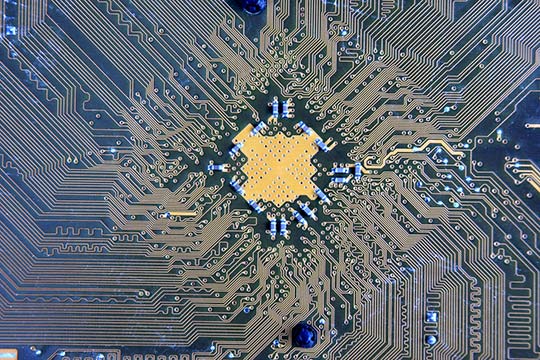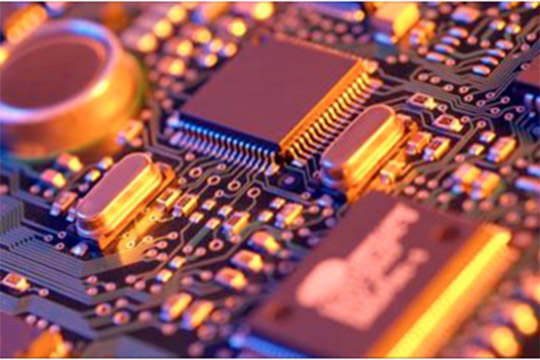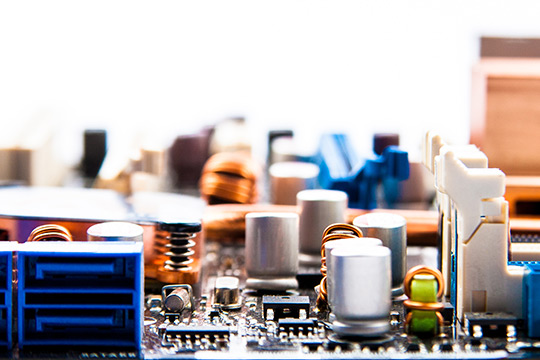TECHNOLOGY FOCUS
Due to the emergence of the IoT and a wide field of automotive applications, professionals coming from various branches of electronic engineering are faced with the need to become familiar with basics of RF and microwave technology, to design RF transmission systems, to verify the results of their designs by measurements, and to develop production testing setups.
All this requires highly specialized measurement and test techniques. Accordingly, there is a rising demand for engineers and technicians who have a sound knowledge in RF and MW laboratory measurement techniques.


COURSE CONTENT
This course will familiarize the participants with distinctive features and tools of RF and microwave techniques, such as features of resonant circuits, distortion and noise problems, reflection and matching, the S-parameters, and the handy Smith Chart tool.
Based on this acquired basic knowledge, we will focus on features and applications of signal generators, spectrum analyzers, network analyzers, and signal analyzers, including the most commonly used accessories.
Practical examples will demonstrate the proper use of RF measurement equipment.
WHO SHOULD ATTEND
This course is aimed at engineers and technicians who want to improve their skills in RF measurements through a practical approach.
Beyond that, especially people who are new in the field of RF will get a thorough introduction into the concepts and tools used in RF technology.

Day 1
The Approach to RF and Microwave Technology
This first lecture will demonstrate typical ways to approach and deal with RF and microwave techniques and problems. We introduce parameters that describe reflections and mismatch and learn how to use the Smith Chart as a powerful tool for impedance transformations.
Building blocks and components are often described by 2-port parameters. We therefore introduce measurement setups for Z-, Y- and S-parameters and learn how to use the parameters to describe the behavior of circuits.
- Basic Definitions
- Passive Components at RF
- Reflection and Matching
- The Smith Chart
- 2-Port Parameters
Day 2
The Effect of Transmission Lines
Transmission lines form the connections between RF and microwave measurement equipment and the devices under test. Therefore, we need to understand the characteristics of those transmission lines and their possible impact on the measured parameters. Practical situations in measurement setups will be demonstrated and discussed in great detail.
- Transmission Lines
- The Characteristic Impedance
- Transmission Line Input Impedance
- Transmission Line
Nonlinear Distortions and Noise
Nonlinear distortions and noise limit the performance of any wireless system and in the same way of RF measurement equipment. We will introduce the underlying sources to nonlinear distortion and noise and identify the characteristic parameters to describe those effects.
- The Generation of Nonlinear Distortions and Noise
- Noise Figure
- Intercept Points
- Phase Noise and Its Characterization
RF Laboratory Accessories
RF laboratory accessories are different from those used at lower frequencies and can substantially affect the dependability and accuracy of measurements. We will therefore focus on the use of cables, attenuators, couplers, filters, mixers, and low noise amplifiers in a RF lab.
- RF Cables
- RF Connectors and Their Handling
- Attenuators
- Combiners and Splitters
- Directional Couplers
- Non-Reciprocal Components
- RF Filters
- Mixers
- Low Noise Amplifiers
Day 3
RF Signal Generators
Operation principles of synthesizers and modulators used in microwave signal generators will be discussed. The design of generators requires certain compromises and practical generators always have their limitations. Practical hints for the use of signal generators in a measurement system will be revealed.
- The PLL Synthesizer
- The Direct Digital Synthesizer
- Frequency Accuracy and Drift
- Analog Modulation
- Digital Modulation
- I/Q Modulation
- sr Modulation
- Correction of the Frequency Deviation Error
- The Use of Generators in Harmonics and Distortion Measurements
Swept Tuned Spectrum Analyzers
The function of a swept tuned spectrum analyzer will be studied via a practical example. From this we will understand the importance of the spectrum analyzer settings and their impact on the performance. Like any other electronic device, the spectrum analyzer introduces nonlinear distortions and noise to the signal under test. These effects are described in detail. We will learn to find optimum settings to maximize the dynamic range for a given measurement.
- Basic Function
- Spectrum Analyzer Settings and Their Impact on the Performance
- Nonlinear Distortions and Noise
- The Dynamic Range of a Spectrum Analyzer
Day 4
Vector Signal Analyzers
By use of the Fast Fourier Transform (FFT), the vector signal analyzer can perform the same measurements as the swept tuned spectrum analyzer. That includes frequency and level, harmonic distortion, and intercept point measurements. However, the dynamic range is smaller.
As opposed to the swept tuned spectrum analyzer, the vector signal analyzer also provides information on the phase of the signal.
Further, due to the increased Intermediate Frequency (IF) bandwidth, it can display time-dependant signals. The decomposition into in-phase and quadrature components gives information that is necessary if Quadrature Phase Shift Keying (QPSK) or Quadrature Amplitude Modulation (QAM) modulation formats are used.
- Basic Function
- Frequency Domain Measurements
- Time Domain Measurements
Network Analyzers
The function of various types of network analyzers will be studied. Systematic errors will be discussed and available methods of their correction introduced. We learn how to use vector network analyzers for reflection and transmission measurements as well as for the measurement of nonlinearity parameters.
- Network Analyzer Architectures
- Systematic Errors and Their Impact
- Calibration of Network Analyzers
- Deembedding and Port Extension
- Measurements at Differential Ports
- Common Mode, Differential Mode and Mixed-mode S Parameters
Day 5
Hands-on Exercises
Participants will apply their acquired knowledge on measurements on prepared devices.
Spectrum Analyzers
- Acquiring a Signal, Measuring Power and Frequency
- Measuring the Occupied Bandwidth of a Modulated Signal
- Intermodulation Measurements, OIP2 And OIP3
- Measuring the Signal to Noise Ratio
- Cold Source Noise Figure Measurement
- Phase Noise Measurements
- Frequency versus Time of a FSK Signal
- Lock Time Estimation on a PLL
Network Analyzers
- Calibration with the Calibration Kit
- S Parameters of a LNA
- Measurements on SMD Components
- Impedance Measurement on a PCB Antenna
- Swept Power Measurement
- Measurements on Differential Structures
Said about the course from previous participants:
"This course gives all basic knowledge on RF. Examples and simulations are very clear and interesting."
"It covers a wide range of things, of equipment that RF engineers are usually using."
"Basics on RF measurements and some details / ideas of RF design."
"Lot of practical examples, very useful. Good mix of topics covered! Experimental part good!"

